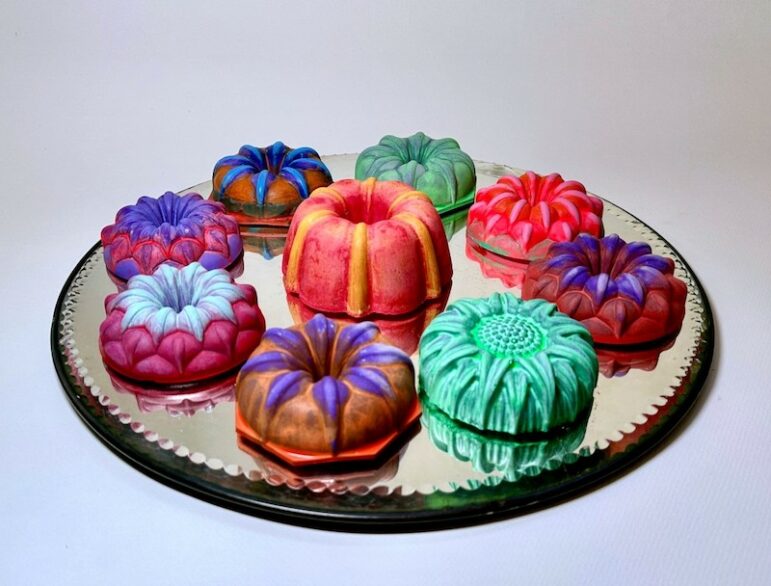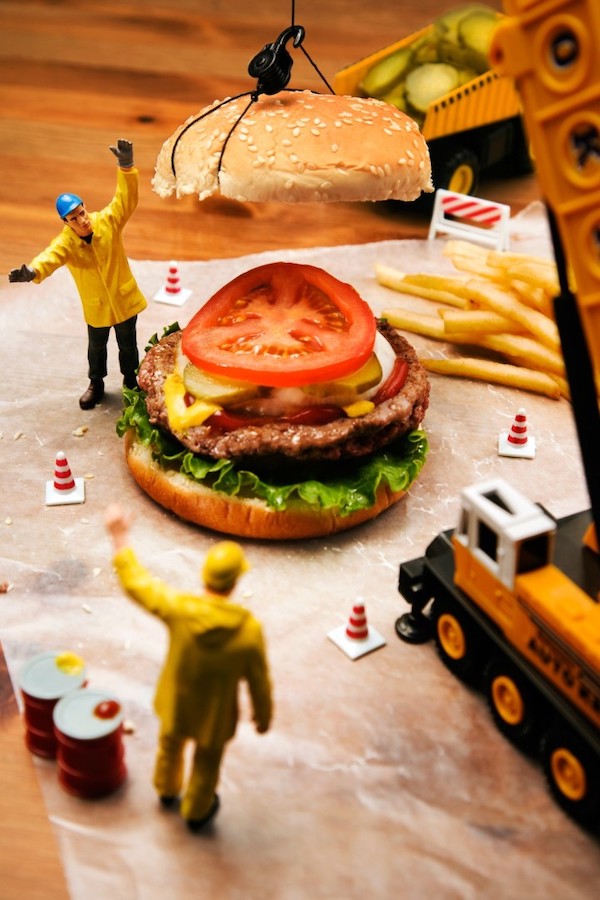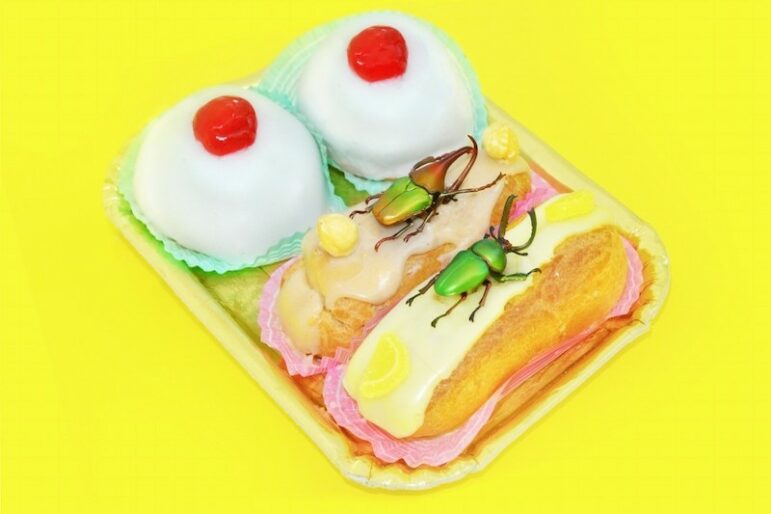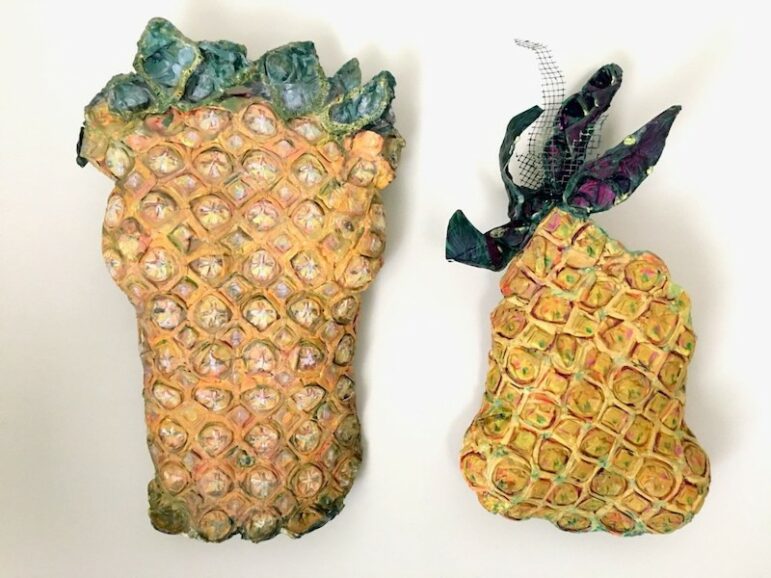
The following announcement was provided buy the Mosesian Center for the Arts:
The Mosesian Center for the Arts is excited to present an exhibition that finds inspiration in food. Depictions of food have been around since antiquity. In mosaics and frescos from Roman times, wine, fruit, bread, and grains have been depicted in private houses and temples. In later centuries, paintings portraying both religious and secular themes often incorporated food and drinks.
The still life genre pioneered by the Dutch and Flemish masters has endured for centuries. From the early representations of lavish food displays of grapes, lobsters, game animals, and exotic fruit to the still life paintings of Cezanne and Warhol’s Campbell soup cans, artists have been fascinated by food. It is imbued with symbolism and is often used to make commentary on economic and social issues. In earlier times, food still life paintings represented wealth, and some illustrated the simpler meals of bread and fish of the less prosperous.
Throughout the centuries, religious and symbolic works of art often incorporated fruit and other foods to express ideas of knowledge and enlightenment, to represent the cycles of life, death, and notions of good and evil.
Today we are surrounded by images of food. With Instagram feeds dedicated to depictions of food to professional food photographers, food is not only sustenance but also indulgence, comfort, and an aesthetic experience. Our relationship with food is complex. We categorize food, often in a very black and white manner, as good and bad, or addictive and life sustaining at the same time. As a society, we acknowledge both the lack of food and overindulgence as problematic. Because of our current state of global interconnectedness, food from various parts of the world is available and has been incorporated in our life.

In Feast: Food Represented in the Visual Arts, artists portray a variety of foods, from fruits and vegetables to pastries and cake and anything in between. Micah Beree’s photograph Food Construction: Lunch visualizes the labor in creating and disposing of the food we consume. The photograph is clever and humorous and focuses the viewer’s attention on an American staple – the hamburger. The artist also poses an important question of how our food is made, the effort and labor involved in producing something as ordinary as the burger.

Cristina Burn’s colorful photograph Sunday Deserts is both appealing and repulsive. The rich, bright colors compliment the sugary treats until the viewer is confronted with the large insects posing on top of the deserts. The artist writes: “Food is at the center of many of the destructive actions that are causing the depletion of our scarce natural resources. The industry that has developed around its processing is creating serious consequences for future generations. I focus on the role of industrial farming, junk food lobbies, and the overwhelming power of the sugar industry. A palette of many colors distracts the observer from the dramatic consequences of the dangerous spiral that humanity has created, much like sugar hides its poison through its candid sweetness.”
Judy Haberl’s sculptural piece Baby Cakes #5 consists of several small cakes made of cast Hydrostone and painted with acrylic paint. The delightful desserts are somewhat realistic, yet they can easily belong in a fairy tale. Offered on an antique tray, they tempt the viewer with their perfect shapes and beautiful colors. At the same time, their artificiality makes them magical and unattainable.

Christina Palamidessi’s Pair of Pineapples depicts the exotic fruit. She mentions that it is the earliest example of a global commodity. “Colombus brought it back to Spain where it enamored everyone. Little known fact: In 1687 the remarkable woman, botanist Agneta Block, achieved the first success with fruiting the pineapple from a slip. Always delicious and with a curious structure, the pineapple is a fruit that people never get tired of looking at it. In homage to its exotic beauty, charm, and the woman botanist, these pineapples have been formed over the torsos of women.”
Feast: Food Represented in the Visual Arts is on display at the Mosesian Center for the Arts, 321 Arsenal St., Watertown, from January 26 – March 8, 2024. The opening reception will be held on February 8, 5:30 – 7:30 PM.
Sponsor for the exhibition is Olespaña, a recently opened restaurant located at 645 Mount Auburn Street in Watertown. In a unique fun and festive atmosphere, the Olespaña menu highlights authentic tapas from Spain along with an extensive whiskey, wine, and cocktail menu.
The mission of The Mosesian Center for the Arts is to enrich the lives of diverse audiences and participants by providing exceptional experiences in theater, visual, and literary art. Website: www.mosesianarts.org